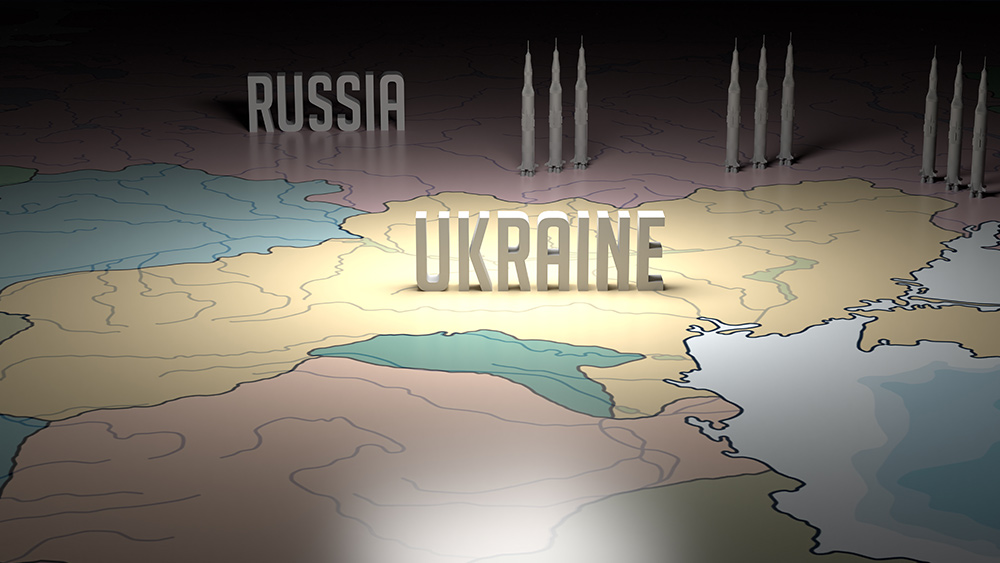END of DOLLAR’s HEGEMONY: Russian oil giant now using yuan and rubles for export settlements
09/27/2023 / By Belle Carter

Russian oil producer Gazprom Neft, a subsidiary of energy giant Gazprom is now conducting crude trade with foreign partners with the Chinese yuan and Russian rubles – a significant step in reducing reliance on the U.S. dollar and euro, which both became unreliable following the Western sanctions imposed on the Eurasian nation.
The company’s CEO Aleksandr Dyukov revealed this information on the sidelines of the TNF Energy forum, which was held in the oil-rich Tyumen Region in Siberia.
The conventional practice of conducting international trade used to be done using major global currencies like the dollar and euro. This decision increasingly reflected a strategic move to align its trade practices more closely with the economic and geopolitical interests of Russia, as well as its significant energy ties with China.
According to Dyukov, the company has not experienced any problems withdrawing its export earnings in foreign currency since it started trading with the said currencies. It also receives its revenue from oil and petroleum products sales at short notice.
Meanwhile, despite a notable shift in other national currencies of a substantial portion of its export transactions, Dyukov mentioned that the Indian currency is still not being utilized in export settlements. “This decision underscores the company’s selective approach in transitioning away from traditional global currencies, taking into consideration the specific dynamics of its international trade relationships, Arabic business news agency MenaFN reported. “We don’t use rupees. We mainly use yuan and rubles. We have practically moved away from payments in dollars and euros,” the CEO said.
Also, Russia is not the only one moving to dethrone the USD. The China National Petroleum Corporation (CNPC) has agreed to switch payments for gas supplies to rubles (RUB) and renminbi (RMB) instead of dollars. According to Simon Watkins, former senior FX trader, financial journalist, and best-selling author, in the first phase of the new payments system, this will apply to Russian gas supplies to China via the ‘Power of Siberia’ eastern pipeline route that totals at minimum 38 billion cubic meters of gas per year (bcm/y).
“After that, further expansion of the new payments scheme will be rolled out. It is apposite to note at this point that although ongoing international sanctions against Russia over its invasion of Ukraine in February have provided the final impetus for this crucial change in payment methodology, it has been a core strategy of China’s from at least 2010 to challenge the U.S. dollar’s position as the world’s de facto reserve currency,” he said in an article he wrote on OilPrice.com.
He added that China has long regarded the position of its renminbi currency in the global league table of currencies as being a reflection of its own geopolitical and economic importance on the world stage. “As of 2022, the RMB’s share in the SDR mix has risen to 12.28 percent, which China still regards as not truly befitting its rising superpower status in the world,” he further pointed out. (Related: Dollar DEMISE: Yuan overtakes dollar in China’s cross-border payments.)
Bloomberg: Russia has advantages in the current global diesel shortage
The global energy market is faced with a shortage of diesel as refineries fail to make enough of the key industrial fuel, further exacerbated after OPEC+ heavyweights Saudi Arabia and Russia slashed production and exports of denser, more sulfurous crude used to produce diesel fuel vital for industry and transport. However, recent circumstances are making Russia the receiving end of all advantages.
The global diesel shortage, for example, is benefiting one of the nation’s key export crude blends, the Eastern Siberia-Pacific Ocean (ESPO), as it is being traded at a premium to global benchmark Brent, according to Bloomberg on Monday, citing unnamed market players. ESPO, which was named after the pipeline that carries it to export markets, climbed to a premium of about $0.50 a barrel to Brent on a delivered basis for October shipments to China, traders told the outlet. Brent crude was trading above $94 per barrel at the start of the week.
The Russian crude blend, which is especially suitable for diesel fuel production, saw its biggest price increase since the G7 and the European Union introduced a price cap on Russian oil and petroleum products. These “influential” economies were pushing to to cut Moscow’s energy revenues, according to Viktor Katona, lead crude analyst at energy analytics firm Kpler.
“[The] last time when ESPO was positive to Brent was back in November 2022,” said Katona. According to the analyst, along with private refineries, Chinese state processing plants have also boosted their purchases, taking up to seven more cargoes of October-loading ESPO than usual.
Visit DollarDemise.com for more news related to the crash of the U.S. dollar.
Sources for this article include:
Submit a correction >>
Tagged Under:
Aleksandr Dyukov, alternative currencies, big government, Bubble, Chinese yuan, Collapse, currency crash, currency reset, De-dollarization, dollar demise, dollar dominance, economic collapse, economic riot, economy, energy supply, export settlements, foreign currency, Gazprom Neft, international trade, money supply, risk, Russian oil, Russian rubles, Western sanctions
This article may contain statements that reflect the opinion of the author
RECENT NEWS & ARTICLES
COPYRIGHT © 2018 MONEYSUPPLY.NEWS
All content posted on this site is protected under Free Speech. MoneySupply.news is not responsible for content written by contributing authors. The information on this site is provided for educational and entertainment purposes only. It is not intended as a substitute for professional advice of any kind. MoneySupply.news assumes no responsibility for the use or misuse of this material. All trademarks, registered trademarks and service marks mentioned on this site are the property of their respective owners.



















